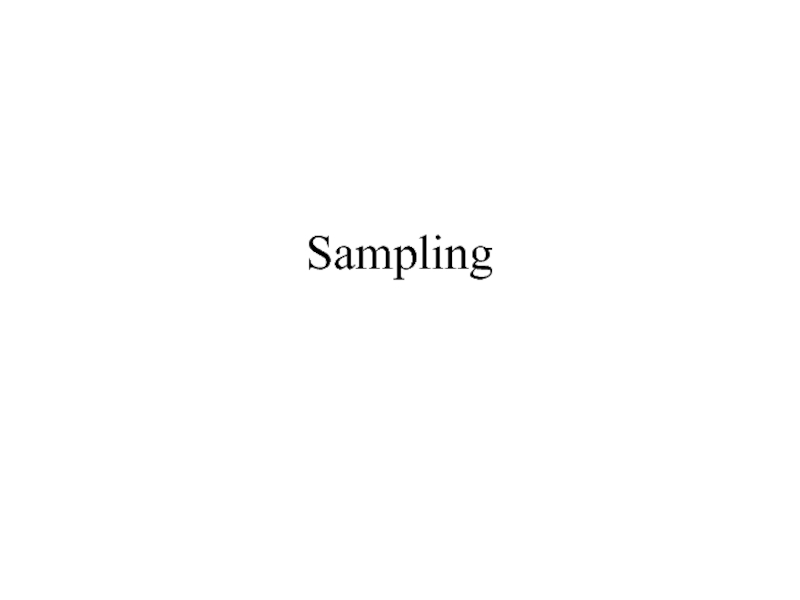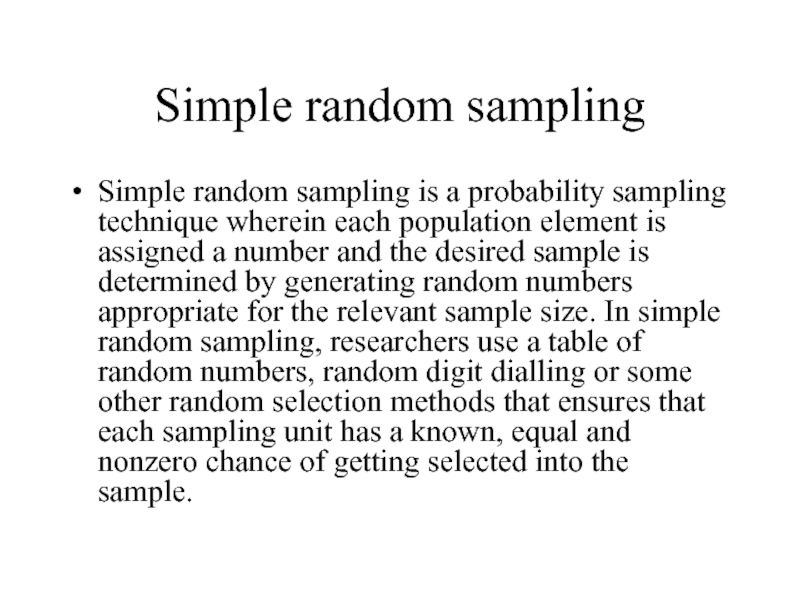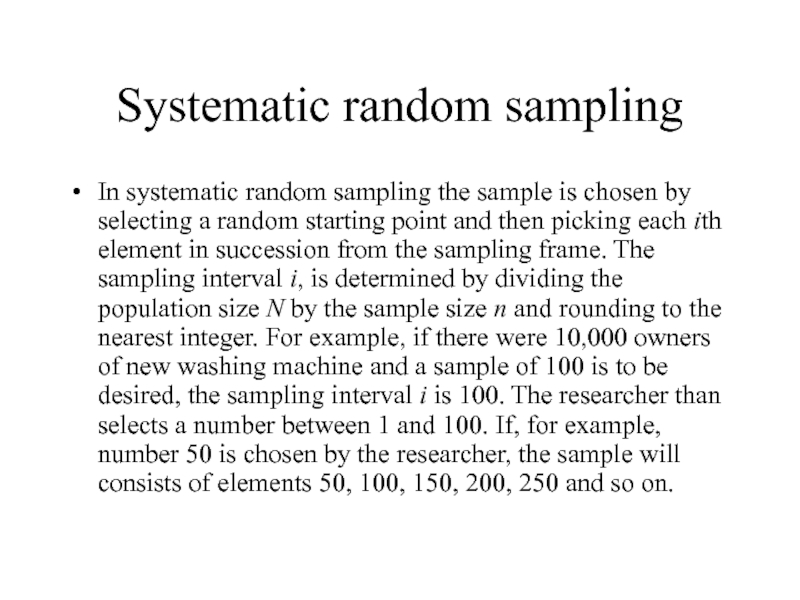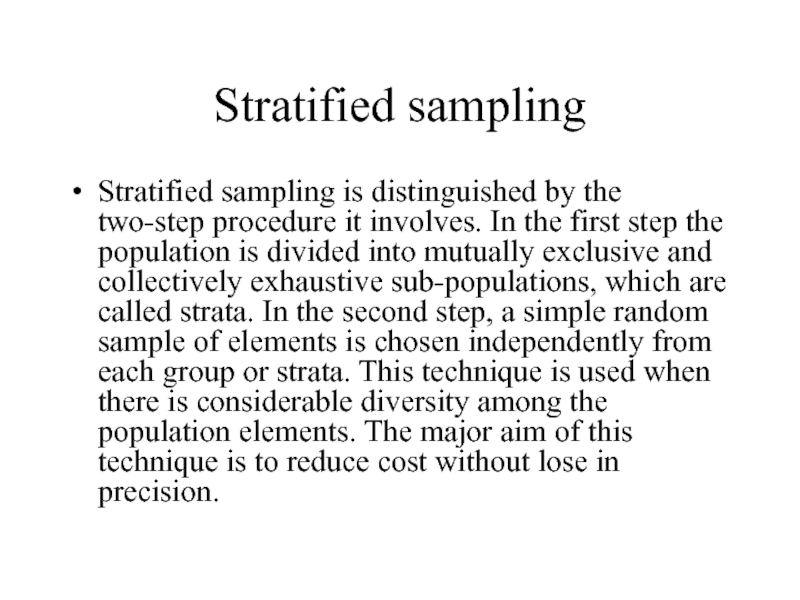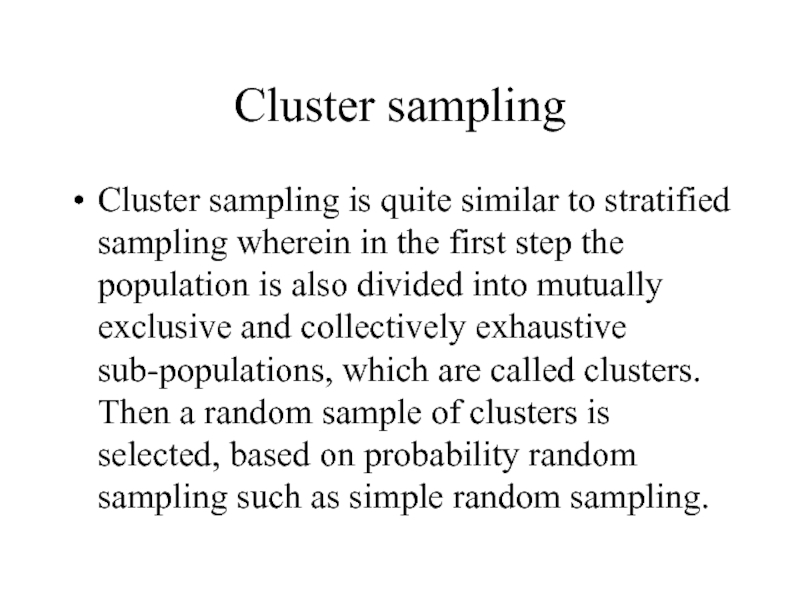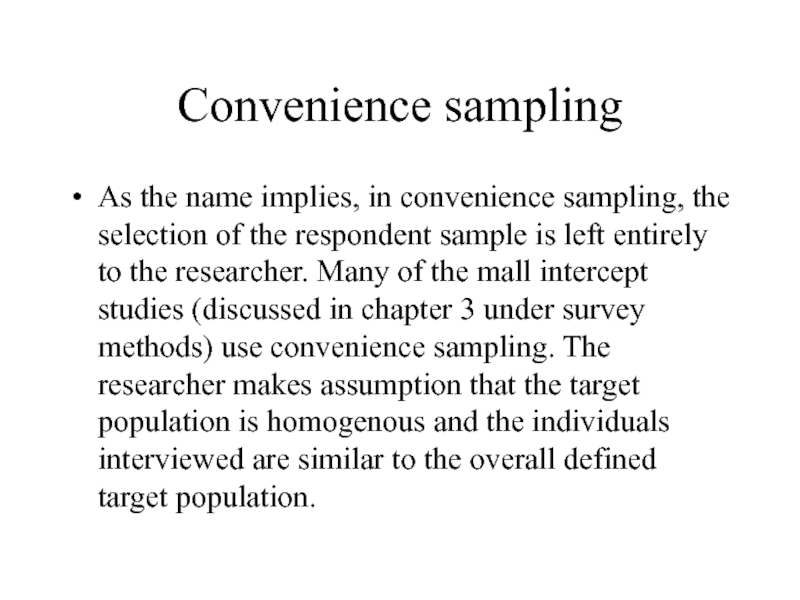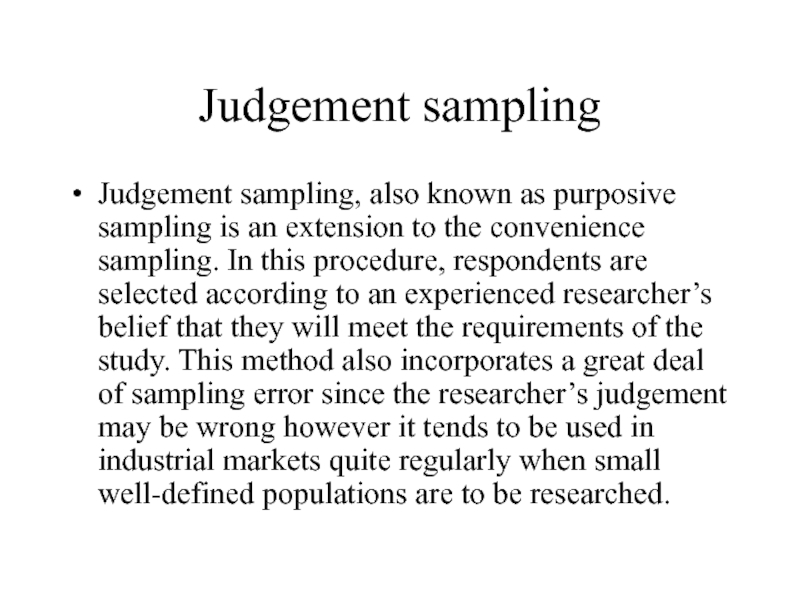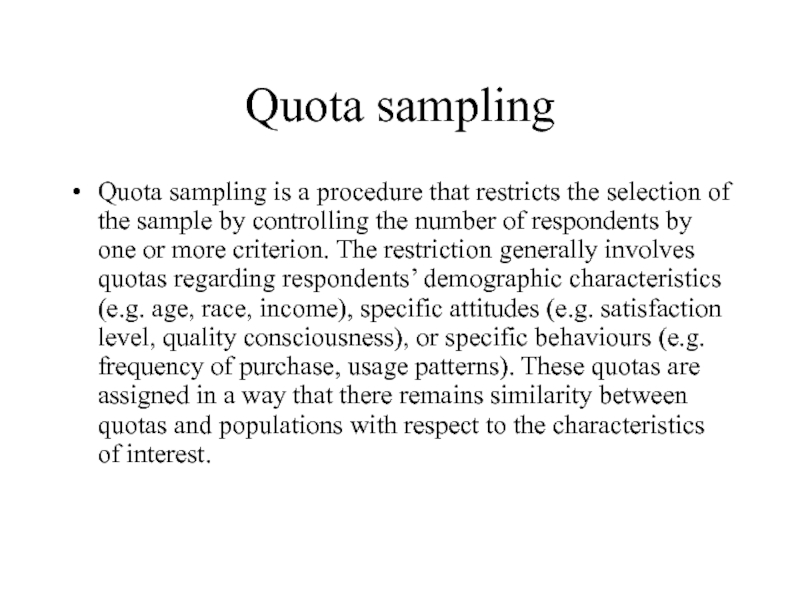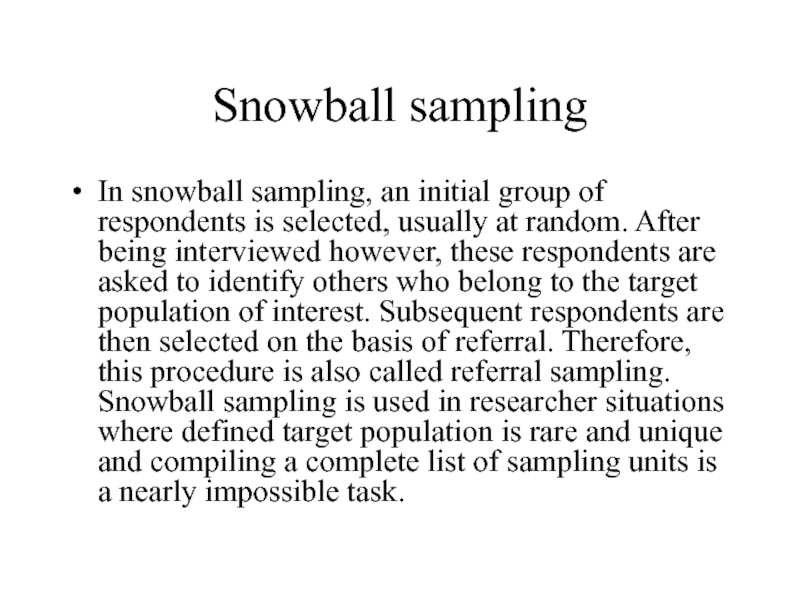- Главная
- Разное
- Дизайн
- Бизнес и предпринимательство
- Аналитика
- Образование
- Развлечения
- Красота и здоровье
- Финансы
- Государство
- Путешествия
- Спорт
- Недвижимость
- Армия
- Графика
- Культурология
- Еда и кулинария
- Лингвистика
- Английский язык
- Астрономия
- Алгебра
- Биология
- География
- Детские презентации
- Информатика
- История
- Литература
- Маркетинг
- Математика
- Медицина
- Менеджмент
- Музыка
- МХК
- Немецкий язык
- ОБЖ
- Обществознание
- Окружающий мир
- Педагогика
- Русский язык
- Технология
- Физика
- Философия
- Химия
- Шаблоны, картинки для презентаций
- Экология
- Экономика
- Юриспруденция
Sampling презентация
Содержание
- 1. Sampling
- 2. Classification of sampling techniques
- 3. Simple random sampling Simple random sampling is
- 4. Systematic random sampling In systematic random sampling
- 5. Stratified sampling Stratified sampling is distinguished by
- 6. Cluster sampling Cluster sampling is quite similar
- 7. Convenience sampling As the name implies, in
- 8. Judgement sampling Judgement sampling, also known as
- 9. Quota sampling Quota sampling is a procedure
- 10. Snowball sampling In snowball sampling, an initial
Слайд 3Simple random sampling
Simple random sampling is a probability sampling technique wherein
each population element is assigned a number and the desired sample is determined by generating random numbers appropriate for the relevant sample size. In simple random sampling, researchers use a table of random numbers, random digit dialling or some other random selection methods that ensures that each sampling unit has a known, equal and nonzero chance of getting selected into the sample.
Слайд 4Systematic random sampling
In systematic random sampling the sample is chosen by
selecting a random starting point and then picking each ith element in succession from the sampling frame. The sampling interval i, is determined by dividing the population size N by the sample size n and rounding to the nearest integer. For example, if there were 10,000 owners of new washing machine and a sample of 100 is to be desired, the sampling interval i is 100. The researcher than selects a number between 1 and 100. If, for example, number 50 is chosen by the researcher, the sample will consists of elements 50, 100, 150, 200, 250 and so on.
Слайд 5Stratified sampling
Stratified sampling is distinguished by the two-step procedure it involves.
In the first step the population is divided into mutually exclusive and collectively exhaustive sub-populations, which are called strata. In the second step, a simple random sample of elements is chosen independently from each group or strata. This technique is used when there is considerable diversity among the population elements. The major aim of this technique is to reduce cost without lose in precision.
Слайд 6Cluster sampling
Cluster sampling is quite similar to stratified sampling wherein in
the first step the population is also divided into mutually exclusive and collectively exhaustive sub-populations, which are called clusters. Then a random sample of clusters is selected, based on probability random sampling such as simple random sampling.
Слайд 7Convenience sampling
As the name implies, in convenience sampling, the selection of
the respondent sample is left entirely to the researcher. Many of the mall intercept studies (discussed in chapter 3 under survey methods) use convenience sampling. The researcher makes assumption that the target population is homogenous and the individuals interviewed are similar to the overall defined target population.
Слайд 8Judgement sampling
Judgement sampling, also known as purposive sampling is an extension
to the convenience sampling. In this procedure, respondents are selected according to an experienced researcher’s belief that they will meet the requirements of the study. This method also incorporates a great deal of sampling error since the researcher’s judgement may be wrong however it tends to be used in industrial markets quite regularly when small well-defined populations are to be researched.
Слайд 9Quota sampling
Quota sampling is a procedure that restricts the selection of
the sample by controlling the number of respondents by one or more criterion. The restriction generally involves quotas regarding respondents’ demographic characteristics (e.g. age, race, income), specific attitudes (e.g. satisfaction level, quality consciousness), or specific behaviours (e.g. frequency of purchase, usage patterns). These quotas are assigned in a way that there remains similarity between quotas and populations with respect to the characteristics of interest.
Слайд 10Snowball sampling
In snowball sampling, an initial group of respondents is selected,
usually at random. After being interviewed however, these respondents are asked to identify others who belong to the target population of interest. Subsequent respondents are then selected on the basis of referral. Therefore, this procedure is also called referral sampling. Snowball sampling is used in researcher situations where defined target population is rare and unique and compiling a complete list of sampling units is a nearly impossible task.
